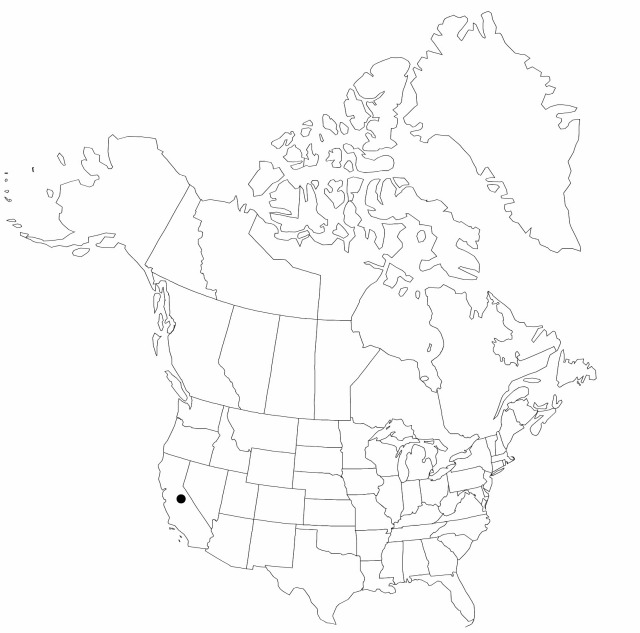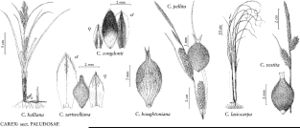Carex congdonii
Bot. Gaz. 21: 6. 1896.
Plants cespitose; rhizomes short. Culms central, trigonous, 30–90 cm, smooth. Leaves: basal sheaths reddish purple-tinged; ligules 6–17 mm; blades green, M-shaped, 3–8 mm wide, pubescent abaxially and on apex of inner band of distalmost sheaths, glabrous or nearly so adaxially, especially distally. Inflorescences 7–20 cm; proximal 2–4 spikes pistillate, ascending; distal spikes erect; terminal 1–2 spikes staminate. Pistillate scales ovate, apex acute, pubescent abaxially, ciliate. Perigynia ascending, purplish tinged distally, ± veinless except for 2 main ribs, ovoid, 3–4 × 1.2–1.8 mm, pubescent; beak 0.3–0.8 mm, ± irregularly bidentulate or erose, hyaline, ciliate.
Phenology: Fruiting Jul.
Habitat: Open alpine and subalpine screes
Elevation: 2600–3900 m
Distribution

Calif.
Discussion
Carex congdonii is sometimes submerged into C. sartwelliana, but in addition to the differences noted in the key and its different habitat, the pistillate scales of the species are usually shorter than the perigynia, exposing the distal purple portion and thus giving the spike a distinctive, dark cast.
Selected References
None.
Lower Taxa
"lengthofbody" is not declared as a valid unit of measurement for this property."shortened" is not a number.
